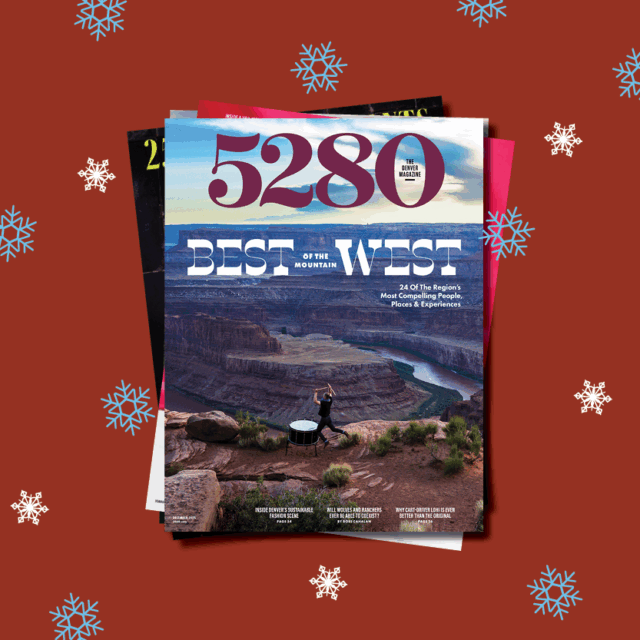The Local newsletter is your free, daily guide to life in Colorado. For locals, by locals.
When Jon Waterman first visited the Alaskan Arctic in 1983 as a Denali National Park ranger on patrol at the wild Noatak River, he had no idea how profoundly the experience would shape his life. Today, the Carbondale-based award-winning author—as prolific an environmental writer and researcher as he is an intrepid explorer and adventurer—has just released his 17th book, Into the Thaw: Witnessing Wonder amid the Arctic Climate Crisis (November 12, 2024). Published by Patagonia following a sizable body of work in collaboration with the likes of the National Geographic Society, ESPN, and the New York Times, this meticulously crafted chronicle of Waterman’s ensuing journeys through “the North”—culminating in a 500-mile paddling expedition through the remote and unforgiving Arctic wilderness in 2022 alongside professional kayaker and photographer Chris Korbulic—is a vividly engaging blend of adventure travel memoir, wilderness documentary, and climate crisis exposé.
From melting permafrost and disappearing sea ice to dwindling herds of caribou and the “greening of the Arctic,” Waterman has compiled an intimately raw and richly detailed account of the changes he observed over 40 years of traversing the wildlands above the Arctic Circle. Drawing on scrupulous journal entries, photographic evidence, and skilled science journalism, he paints an almost lyrical portrait of loss and climate chaos in some of our continent’s last wild spaces. Importantly, his storytelling is laced with compassionate accounts of his time spent with the Inuit people—those who, as he says, have contributed the least amount of greenhouse emissions to this crisis, but are feeling the worst of its impact on a traditional way of life that hangs in the balance.

Ultimately, Waterman has given readers a window through which to view and appreciate the paradoxically fierce and fragile lands that most of us will never be fortunate enough to visit in person. In doing so, he flags the environmental and cultural unraveling that we, ourselves, have brought upon this most critical and mysterious part of our planet.
We recently caught up with Waterman to get the scoop on what he calls his most important work yet.
Editor’s note: The following conversation has been edited for length and clarity.

5280: Do your experiences in the Far North leave you optimistic or fearful for the future?
Jon Waterman: That’s a big question. I believe we’ve given it this wrong name. I don’t think it’s simply climate change. I think it’s a crisis. But its largely a crisis for the people—for the culture of the North. These people are having to relocate. Their lives are endangered in many ways—physically and in terms of their future livelihoods. The sea ice is no longer safe to travel on. Migrations and animal herds are diminishing. But the people are such a generous, noble people. The Iñupiat in particular, whom I mostly write about, are eternally helpful and some of the most resilient people on earth because, ancestrally, they have braved all manner of changes.
Now, we have this meteoric level of change. It’s scary. [But] they know how to adapt, even if they have to move up the coast or away from the rivers. They will find a way, even with a sense of humor, because that’s what they know how to do.
What about the planet itself?
The landscape, seascape, rivers, and wildlife are changing, no question. The Earth has gone through even greater climatic changes, but [this is] going to be very different. I’m always sort of doe-eyed with wonder toward the beauty of [the Arctic]. The quality of light and vastness of the landscape really induce humility. These things are going to continue to exist. The animals—sure, they’re threatened. [But] the polar bear, for instance, was created during the Ice Age, nearly 250,000 years ago. It was merely a brown bear cut off from the glacier. So we had this amazing new species created by this great climatic change a quarter of a million years ago.
Devil’s advocate: Why should we fret about climatic changes that are, per history, cyclic?
We are in the Anthropocene. Unlike all these past climatic transitions, we as humans are responsible for this one. With the exception of the meteor that hit the Yucatan 66 million years ago, this particular transition is happening faster. We have created the problem, so we are responsible for stopping it. Another good reason is social justice. It’s in the low-lying areas of the earth, where the people who have done the least amount of greenhouse-gas emission in their lives are going to suffer the most from this crisis we’ve created.
So, why don’t more people care?
Everything that’s happening in the Lower 48 is nothing compared to what’s happening up north. For people to care, they have to see local southern biosphere disasters, and then, imagine what’s going to happen—what already is happening—up north. We hear very little about it because, for instance, there are only 50,000 people that live above the Arctic Circle. There’s not many people up there. [But] what happens in the Arctic does not stay in the Arctic. These changes are already affecting Atlantic currents and the ramifications of that are that South America is going to become a lot warmer and western Europe is going to become much, much colder. We have these polar vortexes now because the jet streams have changed. There are a myriad of different factors that should make people—anyone who’s paying attention—care a great deal.
How did you capture 40 years’ worth of journeys in such detail?
Journaling is a discipline. I was lucky enough to spend many years—which probably collectively added up to a couple years of my life—on Denali and other sub-zero mountains, and I painstakingly would try to write every day in my journal. Being up in the Arctic in the summer, although I didn’t have crevasses, avalanches, and sub-zero weather to deal with, I had storms and bears and loneliness.
Also, I used my camera. I’m always taking pictures. Although most of my photos aren’t publishable, I kept them all. They’re incredibly valuable records because they evoke memories or moments or scenes or nuances of a place that otherwise I often missed in my journals. I also have a really good memory. I can look at a slide and be transported back to these places.
One of your earlier journeys across the Arctic was a solo expedition. That takes a certain kind of person. What kept you going?
Curiosity. I’m insatiably curious. My fears of being alone on that long trip were somewhat mollified by looking at maps. I’ve written three atlases now for National Geographic—that’s how much I love maps. I would imagine the landscapes, cliffs, valleys, and coastal plains, and I had pictures of them in my mind from looking at the maps (this was before Google Earth). I really wanted to see how these landscapes matched up with my imagination. That’s just one example.
To see animals—that was another curiosity. To see polar bears up close in the wild. Here’s an important point: I promised I’d never do a trip alone again. It was easy to make that promise because I realized from all that time alone that I’m not a misanthrope. That I really like people. That I thrive on companionship, laughter, and human company.
 You seamlessly combine scientific research with vivid storytelling for a read that’s both beautiful and informative. What’s the secret?
You seamlessly combine scientific research with vivid storytelling for a read that’s both beautiful and informative. What’s the secret?
Just being dogged about it all. In this book, I really worked on the prose. I wanted the narrative to hit people hard. I wanted it to be like a long piece of poetry. I think that only if you’re suffering can you really get to know a place through extended journeys, often by being alone and scared. If you have that kind of experience, if you’re frightened, cold, and hungry—and it’s not easy since you don’t deliberately want those things—it gives you an inside track. This sounds kind of masochistic, but I’ve always sought out those types of experiences to more carefully convey a land or a seascape.
What’s next?
I’m trying to raise support to write a book about climate change in the national parks. More people care about national parks, with a much greater love, than they do about this obscure Arctic that most readers will never visit. So if I were to cover climate change in national parks…maybe I can make a difference. I want to effect change. That’s my mission.
Meet the author: Catch Waterman in person and snag a signed copy of Into the Thaw: Witnessing Wonder amid the Arctic Climate Crisis on January 21 at 6:30 p.m. at the Boulder Bookstore, where he’ll be discussing the book with distinguished environmental photographer and founder of the Earth Vision Institute, James Balog. Grab tickets ($5) here.













